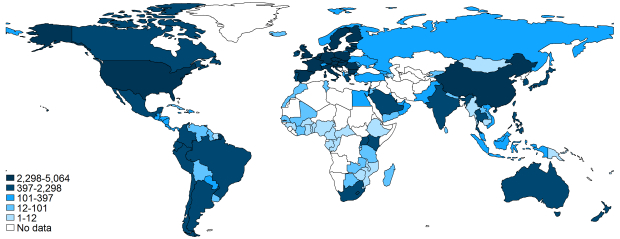Open access to data on non-tariff measures
19 July 2017
wiiw has adapted WTO non-tariff measures data to make it usable in econometric analysis. The data is now free to download, for use by researchers and to inform policy debates on free trade.
In February 2017 wiiw launched its Open Data platform, supporting the European Open Science Agenda which promotes the re-use of research output. Today wiiw is publishing its fourth dataset downloadable free of charge:
Non-tariff measures (NTMs) are increasingly central to debates on international trade, and this importance is only likely to increase in the coming years. The election of Donald Trump as US president, and the UK’s decision to leave the EU, have both catapulted debates over free trade into the public eye. However, while public debate on international trade tends to remain largely focused on tariff measures, discussions over NAFTA, the UK’s future relationship with the EU or the envisaged economic partnership agreement with Japan, for which an agreement in principle was announced on 6 July, indicate that NTMs are often more important. Access to high quality and internationally comparable data on NTMs is therefore crucial for researchers to be able to inform policymakers of the implications of their decisions.
Despite the growing importance of (NTMs) in international trade, respective data to be used in econometric analysis are rather scarce. The wiiw NTM Dataset is a compilation of notifications of non-tariff measures to the WTO, which are accessible via the Integrated Trade Intelligence Portal (I-TIP). It covers notifications of more than 100 importers affecting over 5,000 products since 1979 and is regularly updated. However, this dataset is not fully available in a form necessary for econometric analysis. To address this, wiiw has complemented the dataset with product information at the HS 6-digit level – the most disaggregated product level for which international trade data is readily available – and transformed the data to bilateral panel data. If researchers or policy makers were interested in the number and type of NTMs in force between two trading partners in a given year on a product as specific as e.g. fresh fertilised eggs of domestic hens this information can be found in the new dataset.
In their accompanying paper ‘The Evolution of Non-Tariff Measures and their Diverse Effects on Trade’, the authors discuss different types of non-tariff measures, ranging from sanitary and phytosanitary measures (e.g. regulations on pesticides), via technical barriers to trade (e.g. labelling requirements for machinery), to quotas or antidumping investigations to combat ‘unfair trade’. Furthermore, they present the evolution of the use of NTMs over time and their geographical dispersion. They also describe in detail how the data were set up and how HS codes were imputed to the WTO dataset. Finally, they provide estimates of trade effects of non-tariff measures, pointing to the importance of differentiating between different NTM types. Lumping technical barriers together with sanitary measures may be far worse than comparing apples with oranges.
Figure: Countries imposing NTMs
Other datasets currently available via the wiiw Open Data:
- The wiiw Tradability Dataset provides an indicator describing a country’s specialisation in the production of tradable goods.
- The wiiw Import Demand Elasticities Dataset presents estimates of unilateral import demand elasticities estimated for 167 countries and more than 5,000 products.
- The SEE Jobs Gateway Database is the result of a collaboration with the World Bank and gives access to labour market indicators for six Western Balkan and four EU comparator countries, including Austria.

